We teach International and American style ballroom dances at the Cincinnati Ballroom Company.
International Standard
A category of dances in the International Style of ballroom dance competitions. This style includes the Waltz, Tango, Viennese Waltz, Slow Foxtrot, and Quickstep. The International Standard style makes exclusive use of closed positions. There are no open or separated figures.
Waltz: danced in ¾ time, the Waltz is a progressive dance characterized by its rise and fall.
Tango: the English embraced this dance as part of competition in 1922. The International Style Tango is danced in closed position and progresses rapidly around the floor.
Viennese Waltz: a rotary dance where the dancers are constantly turning either toward their right (natural) or left (reverse). Danced in ¾ time, the Viennese Waltz, unlike the Waltz, which is danced at approximately 90 beats per minute, is danced almost twice as fast.
Slow Foxtrot: slower than its American counterpart, the International Style Foxtrot, sometimes referred to as the “SlowFox” is characterized by long, gliding movements across the floor.
Quickstep: at its beginning, the Quickstep might have been referred to as the “faster foxtrot”, but it has taken on its own distinct character. Quickstep is danced in 4/4 time at approximately 50 beats per minute.
American Style Rhythm Dances
The American Style Rhythm category refers to the group of dances danced in American Style ballroom competitions. It includes Cha-cha-cha, Rumba, East Coast Swing, Bolero and Mambo. Sometimes it may include Samba and West Coast Swing.
Cha Cha Cha: The American style of this dance is just flirtatious as its’ Latin counterpart. Danced in closed, open, and solo positions, the Cha Cha Cha is easily danced to modern music.
Rumba: became popular in the USA in the 1920’s. Built around the “Cuban box|” step, the Rumba should display sensual and flirtatious movements between the man and woman.
East Coast Swing: known as the “triple swing”, this true American dance dates back to the 1920’s. The East Coast Swing should be fun, fast, and energetic.
Bolero: is also one of the five main competition dances. This dance is quite different from the other American Rhythm dances in that it not only requires Cuban motion but rises and falls such as found in the Waltz.
Mambo: is a Latin dance of Cuban origin that corresponds to mambo music. The fusion of Swing and Cuban music produced this fascinating rhythm and in turn created a new sensational dance. The original mambo dance was characterized by freedom and complicated foot-steps.
Social Dances: Hustle, West Coast Swing, Jitterbug, Salsa
International Latin
This is a category of dances danced in International Style ballroom competitions. It includes the Samba, Cha Cha Cha, Rumba, Paso Doble, and Jive.
Cha Cha Cha: this Latin American dance of Cuban orgin was developed from the danzon by a syncopation of the fourth beat. The name is onomatopoeic, derived from the rhythm of the guiro (scraper) and the shuffling of the dancer’s feet. Danced on a straight leg with lots of hip actions, it is a flirtatious and sexy dance.
Samba: this lively and rhythmical dance of Brazilian origin is danced in 2/4 time. Ballroom Samba, is somewhat disconnected from its origins and evolution of the dance and music that gives it its name. It is a form adapted for its ability to be a partner dance. Samba’s movements are borrowed from Afro-Brazilian traditional dances, and may be considered to be the sexiest and most difficult of all Latin dances.
Rumba: the slowest of the five competitive International Latin dances, the Rumba was derived from Cuba in the pre-revolutionary period. Like the Cha Cha Cha, the Rumba is characterized by beautiful foot, leg, and hip actions.
Paso Doble: is the a Latin Dance most resembling the International Standard Style in that the forward steps are danced on the heel while the frame is wider and more strictly held. There is significantly less hip actions than the other Latin dances. It is the dance of the “bull fighter”, where the man has a powerful role in the dance while the lady may be danced as his shadow or cape.
Jive: the fastest of the five International Latin dances, the Ballroom Jive is a very happy and lively dance. The lifting of the knees and the bending or rocking of the hips often occurs. It is always danced last in International Style ballroom competitions.
American Style Smooth dances
The American Style Smooth category refers to the group of dances danced in dancesport competitions. Included in this category are the Waltz, Tango, Foxtrot, and Viennese Waltz. This category loosely corresponds to the Standard category of International Style ballroom. However, Smooth differs from Standard in its inclusion of open and separated figures, whereas Standard makes exclusive use of closed positions.
Waltz: danced in ¾ time, the Waltz is a progressive dance characterized by its rise and fall.
Tango: the English embraced this dance as part of competition in 1922. The International Style Tango is danced in closed position and progresses rapidly around the floor.
Foxtrot: at its inception, the foxtrot was originally danced to ragtime. Today, the dance is customarily accompanied by the same big band music to which swing is also danced.
Vienesse Waltz: a rotary dance where the dancers are constantly turning either toward their right (natural) or left (reverse). Danced in ¾ time, the Viennese Waltz, unlike the Waltz, which is danced at approximately 90 beats per minute, is danced almost twice as fast.





